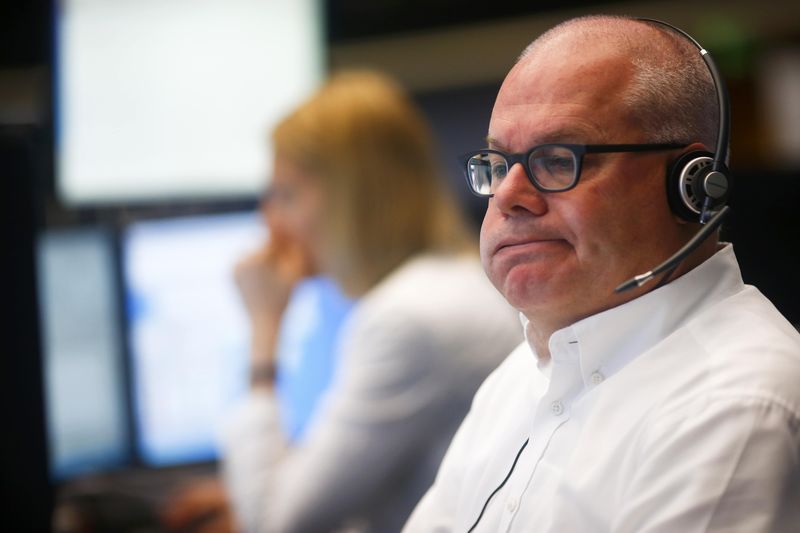By Prakash Chakravarti
HONG KONG, Dec 31 (Reuters) - Syndicated lending in Asia Pacific (excluding Japan) of US$471bn was nearly 10% lower in 2015 than a record US$523bn in 2014 as demand for capital fell amid a regional slowdown led by China's cooling economy.
Although China's slowing growth rocked the global markets in the second half of 2015, it remained the busiest loan market in the Asia Pacific region and supplied nearly a third of loan volume.
Chinese borrowing of US$149bn from 470 deals was 5% higher than US$141.31bn from 659 deals signed in 2014, although deal flow tailed away towards the end of the year.
"Asian loan volume in 2015 was lower than 2014 because borrowers did not need new money and were focussed on deleveraging," said Atul Sodhi, head of debt origination and advisory, Asia Pacific for Credit Agricole (PA:CAGR).
Although China's slowdown pushed commodity prices into a downward spiral in the second half of the year, Greater China took a bigger share of Asia Pacific borrowing in 2015 than a year earlier and continued to dominate regional lending. Lending to Greater China totalled US$291bn, 7% higher than US$271.5bn transacted in 2014.
Hong Kong volume, which is often dominated by offshore borrowing by Chinese companies, saw a 5% decline to US$87bn from a record US$92bn in 2014.
Other traditionally strong Asian loan markets such as India and Indonesia saw steeper declines of 46% and 45% respectively. Offshore loans for Indian companies totalled US$15.55bn, while Indonesian firms borrowed US$8.42bn.
Lending in Australia dropped by 25% to US$79.45bn in 185 deals and Singapore disappointed with a 27% drop to S$38.65bn in 91 transactions.
Dispelling the regional gloom, however, were Macau, the Philippines and Taiwan, which saw higher loan volume than in 2014. Macau's loan volume of US$9bn was nearly 55% higher and the Philippines saw an 82% increase to US$4.78bn. Taiwan's borrowing climbed 47% to US$46.5bn from 212 financings, including Asia's largest loan of the year - a NT$382bn (US$12.05bn) restructuring deal for rail operator Taiwan High Speed Rail Corp 2633.TWO .
Across the region, only China, Hong Kong, Taiwan and Australia had more than 100 internationally syndicated loans in the course of the year.
SLOW M&A
M&A lending across the Asia Pacific region was around 16% lower at $48bn than US$57.18bn last year due to the sluggish economic environment.
Lower M&A lending was also partly due to Chinese domestic banks stepping in to finance a wave of privatisations of Chinese US-listed companies to offset rising bad debts at home. Many of these deals were structured as buyouts and were provided in US dollars as well as renminbi and were not internationally syndicated.
The year closed with the biggest Chinese take-private deal, the US$9.3bn LBO of Chinese internet firm Qihoo 360 QIHU.N which was backed by a US$3.4bn-equivalent loan.
As with the majority of the Chinese privatisation deals, domestic lenders led Qihoo 360's jumbo loan. China Merchants Bank underwrote the financing on a sole basis and was expected to invite two other Chinese banks to join the deal.
"Liquidity, and thus competition, has remained at a consistently inflated level as policy banks in China, Japan, and Europe progressed with quantitative easing measures," said Justin Crane, global head of loan syndicate and distribution at Standard Chartered (L:STAN).
"Simultaneously there has been a shortfall of borrowers looking to access the syndicated loan markets as lenders have shown an increased willingness to provide large bilateral loans at tight prices to avoid scale backs," he added.
PRICING PRESSURE
Despite a weaker macroeconomic backdrop, lower deal flow put pressure on pricing as banks fought to win mandates and syndicators grappled with budget targets.
"Pricing is the lowest level in five years for strong investment grade blue chip names," said Siong Ooi, head of Asia Pacific syndicated and leveraged finance at Bank of America Merrill Lynch (N:BAC).
This was a reversal from 2014, when the rising cost of funding for Taiwanese banks, the region's biggest lenders, and concerns about possible over exposure to China drove loan pricing higher in the first half of 2014.
Corporate governance issues relating to Chinese companies continued to rattle the market in 2015, but as deal flow slowed from China in the third and fourth quarters, activity picked up in India.
Top-tier Indian companies and state-owned firms were able to take advantage of these dynamics to obtain competitive pricing. The Islamic Republic of Pakistan also cut borrowing costs by nearly 30% on its largest loan to date in December.
Pakistan raised a US$300m 18-month loan with an interest margin of 325bp over Libor at a similar rate to a US$250m one-year loan signed in September.
"Banks, for now, are very liquid and are aggressively chasing assets. There has been a lack of higher-yielding assets in the market as well. This massive imbalance between supply and demand has driven pricing down," said Ooi of BAML.
"For top tier borrowers, the view is that pricing is close to or at the bottom, simply because it is at or below the funding costs of the majority of the lender base. In addition, the USD-JPY basis has widened so the Japanese mega banks may be less aggressive on pricing," Crane said.
Bankers expect activity levels to continue to decline in 2016 as borrowers continue to turn to local currency loans as the US Federal Reserve increases interest rates, which will make dollar debt more expensive.
"Competition for mandates will increase, leading to further pricing compression, particularly fees, lengthening of tenors and loosening of structures," Crane said.
